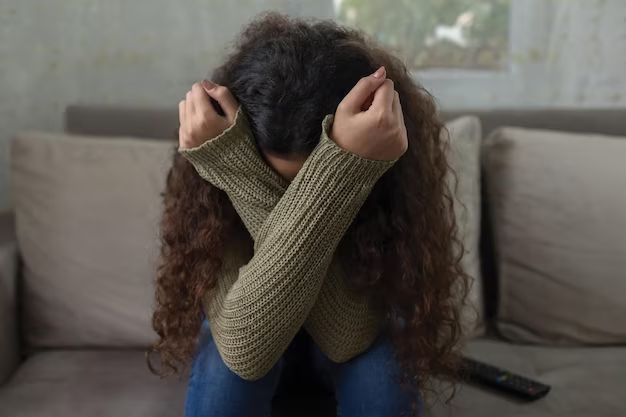Some of life’s most fundamental needs are met by our families: love, support, and friendship, to name a few. But family relationships may get complicated and tense, just like a delicate tapestry. When a family is having trouble getting along due to arguments, poor communication, or unsolved issues, family dynamic therapy may help. The next conversation will delve deeper into the issue of Family Dynamic Therapy and its efficacy in mending broken familial bonds.
What is Family Dynamic Therapy?
Family Dynamic Therapy, also known simply as “family therapy,” is a form of talk therapy with the goal of improving family life by addressing conflict and improving communication. This method is predicated on the idea that every family has its own distinct dynamics, and that by taking a systemic approach, problems within the family unit can be better understood and addressed.
Dynamic Family Therapy’s guiding tenets:
The success of Family Dynamic Therapy in improving family ties stems from its adherence to a set of core principles.
Holistic Approach
Family therapy focuses on treating the family as a whole unit, rather than focusing solely on individual family members. Family therapists focus on observing and understanding the dynamics and interactions between family members. This lens enables therapists to observe how changes in one part of the system can impact the overall dynamics of the family. Resolving a parent’s substance addiction problem can have a positive impact on the overall health of the entire family.
- Example: Consider a family where the teenager’s defiance is causing problems. Family therapy seeks to provide a more all-encompassing solution to the problem by looking at the parents’ reactions and interactions in addition to the adolescent.
Communication
A strong foundation for any happy family is open lines of communication. Family therapists are aware that miscommunication is frequently to blame for family strife. In this way, they aid in the development of more open and fruitful lines of communication within the household.
- Example: A problem a family may be having is a failure to discuss their feelings openly. The goal of family therapy is to promote better understanding and empathy among family members by teaching them active listening skills and providing a secure space for them to express their emotions.
Change and Adaptation
Various life experiences and changes cause families to change and develop over time. The goal of family therapy is to help families learn to adjust to these shifts and grow stronger as a result. It recognizes the fact that major changes in a person’s life, such as a birth, death, divorce, or career, can have a profound effect on a family’s dynamic.
- Example: Let’s say a divorce has caused strain in a family. The primary goal of family therapy would be to aid family members in adjusting to and thriving in light of this major life upheaval.
Strengths-Based
By focusing on the positive, family therapists look for and cultivate the family’s innate strengths and resources. By focusing on these positive qualities, therapists can encourage families to solve their own difficulties and build confidence and resilience.
- Example: Family counseling may highlight the family’s resourcefulness and perseverance as strengths if they are coping with financial difficulties. As a result, therapists can work with families to capitalize on their strengths, such as by assisting them in creating a spending plan or investigating new employment options.
How Family Dynamic Therapy Works

A professional therapist acts as a neutral facilitator in Family Dynamic Therapy, which is a collaborative process between the family members and the therapist. Here’s how it usually goes down:
Assessment
A thorough evaluation by the therapist is the first step in Family Dynamic Therapy. During this stage, the therapist learns about the family’s background, dynamics, and current problems. Based on the results of this evaluation, a therapy plan can be developed to best meet the requirements of the family as a whole.
Important aspects of the evaluation stage:
- Family History:The therapist will inquire about the family’s background, touching on topics such as major life events, relationships, and previous therapy experiences.
- Dynamics: The therapist gains insight into the family’s power dynamics, communication styles, and role hierarchies through investigating the family’s dynamic.
- Issues Identification: The therapist collaborates with the family to pinpoint the specific problems that must be addressed and fixed.
Goal Setting
After doing an evaluation, the therapist works closely with the family to establish realistic and attainable therapeutic objectives. Setting these objectives helps both the family and the therapist to focus on what has to be accomplished during therapy.
Goal setting’s essentials:
- Mutual Agreement: The therapist and the family work together to set the treatment’s objectives.
- Specific and Measurable: In order to keep track of progress efficiently, goals are specified in concrete, quantifiable terms.
- Realistic and Time-Bound: The time limit given for accomplishing each goal is reasonable.
Intervention
Family dynamic therapy’s therapeutic intervention phase is where the magic happens. Here, the therapist uses a wide variety of strategies to fix the problems and strengthen the family unit. Each family’s situation and desired outcomes are taken into account while designing these interventions.
Common methods of therapy:
- Communication Enhancement: The therapist works with the family to improve their communication skills, fostering more honest and fruitful exchanges of ideas.
- Conflict Resolution: Family tension is reduced by the use of techniques for conflict management and resolution.
- Behavior Modification: Positive reinforcement and other behavioral methods are used to modify maladaptive behavior.
- Role Clarification: Healthy limits and expectations are established via discussion and clarification of duties within the family.
- Genogram Creation: Genograms, which are graphical depictions of family trees, can provide light on one’s ancestry and family dynamics.
Homework
Between sessions, families in Family Dynamic Therapy often have homework assignments. These tasks are meant to help patients retain information and practice skills discussed and practiced in treatment. Family members can put their newfound knowledge to use in everyday life with the help of homework.
The upsides of having homework:
- Skill Application: Members of the family can put their newly acquired knowledge and actions to use in their regular routines.
- Reinforcement: Therapeutic concepts are reinforced through homework assignments, which aids in long-term improvement.
- Shared Responsibility: Sharing in the responsibility and dedication of completing homework together strengthens family ties.
Review and Adjustment
Since FDT is an ongoing process, it’s important to check in frequently to see how things are progressing and make any required adjustments. Together, the therapist and family will determine if the treatment plan is working as intended or if adjustments need to be made.
Elements crucial to the reevaluation and tweaking stage:
- Feedback: Members of the family share their thoughts and observations about their development.
- Therapist Guidance: The therapist gives advice and stays at the family’s side when their circumstances change.
- Flexibility: New problems or shifting family dynamics may necessitate a different therapeutic strategy..
Benefits of Family Dynamic Therapy

For troubled families, Family Dynamic Therapy has many advantages:
Improved Communication
Improving communication between family members is a central focus of Family Dynamic Therapy. Sharing one’s thoughts, feelings, and desires with another is impossible without good communication. How this treatment helps with communicating better:
| Benefits | Description |
| Reduced Misunderstandings | Misunderstandings and misunderstandings are reduced as family members learn to express themselves more effectively. |
| Decreased Conflicts | With better communication, families may address issues and resolve conflicts in a way that is beneficial for everyone involved. |
| Active Listening | In order to better understand and empathize with one another, family members are encouraged to engage in “active listening” during therapy sessions. |
Conflict Resolution
With the help of Family Dynamic Therapy, families are better able to address and resolve their disputes. Family conflict is normal and expected, but how it’s handled can have a major impact on everyone’s well-being. Think about the advantages associated with resolving conflicts:
| Benefits | Description |
| Healthier Conflict Management | Conflicts have less of an effect on family life when members learn to resolve their differences in constructive ways. |
| Enhanced Problem-Solving Skills | Family members are better able to work together to solve problems after participating in therapy sessions together. |
| Reduction in Escalation | By encouraging honest and constructive communication, therapy sessions help families work through their differences without resorting to harmful fighting. |
Enhanced Relationships
Family members who have participated in Family Dynamic Therapy generally report feeling closer and more connected to one another. The therapy’s emphasis on resolving root causes and enhancing interpersonal dynamics contributed to the strengthening of the relationship. Here are some of the ways in which this therapy strategy might improve interpersonal connections:
| Benefits | Description |
| Increased Empathy | The members of the family are able to develop a deeper level of compassion for one another through family therapy. |
| Strengthened Trust | When members of a family learn to talk to one another without holding back, they build trust and confidence in one another. |
| Greater Emotional Connection | The therapeutic environment fosters open communication and helps family members feel more connected to one another. |
Coping Skills
Life is difficult, and so are the stresses that many families must deal with. The crucial coping skills for families to face these issues jointly are provided by Family Dynamic Therapy.
| Benefits | Description |
| Enhanced Resilience | The skills of resilience and adaptation are taught to families, making them better able to weather the inevitable storms of life. |
| Stress Management Techniques | Family members can benefit from learning stress management techniques in therapy as one of the coping mechanisms offered. |
| Improved Problem-Solving Abilities | Members of the family learn to work together to solve problems and improve their overall effectiveness. |
Behavioral Changes
When it comes to influencing good changes in behavior, Family Dynamic Therapy is very effective, especially with children and adolescents:
| Benefits | Description |
| Behavioral Modification | Positive changes in children’s and teenagers’ behavior are the result of collaborative efforts by therapists and families to pinpoint and treat specific issues. |
| Improved Communication Skills | Youth develop the ability to articulate their thoughts and feelings through the acquisition of age-appropriate language abilities. |
| Emotional Regulation | Family therapy helps children and adolescents learn to control their emotions and react positively to life’s challenges. |
Support
One of the best things about Family Dynamic Therapy is that it gives families a place to talk about their problems without fear of being judged.
| Benefits | Description |
| Safe Environment | The safe and confidential space provided by therapy sessions allows family members to express their thoughts and feelings without fear of reprisal. |
| Validation of Experiences | When their stories, feelings, and problems are validated, families can find comfort and strength in knowing they are not alone. |
| Professional Guidance | Professional counselors may be an invaluable resource for families, guiding them through difficult situations and giving them new perspectives and opportunities for development. |
Common Issues Addressed in Family Dynamic Therapy
Family therapy can address a wide range of issues, including:
Marital Conflicts
Arguments between spouses are a leading cause of strain on households. In order to resolve these disagreements, family dynamic therapy incorporates the active participation of both parties. Couples therapy aims to improve communication, teach couples conflict resolution skills, and restore trust between partners. Couples counseling is a typical method used to repair troubled marriages.
Key Points:
- Marriage counseling, a subcategory of family therapy, is aimed specifically at strengthening the marital bond.
- To help couples resolve their differences, therapists may employ methods including active listening, empathy exercises, and conflict resolution.
Parent-Child Conflicts
Family peace can be ruined when parents and children have arguments. Disagreements may occur when two parties have opposing ideals, expectations, or disciplinary approaches. The goal of family dynamic therapy is to improve communication and understanding between parents and their children.
Key Points:
- In family dynamic therapy, talking to your kids is a must.
- Parent-child relationships can benefit from strategies like role-playing, assertiveness training, and parenting workshops.
Sibling Rivalry
Sibling rivalry is a typical problem in many households, especially those with children. Siblings can benefit from family therapy by learning to communicate more effectively, resolving problems, and strengthening ties. Therapists may employ a number of strategies for dealing with sibling rivalry, including conflict mediation and exercises designed to foster empathy.
Key Points:
- By acting as a mediator between the two parties, the therapist acts as an impartial third party to help the arguing siblings come to an agreement.
- Siblings can benefit from participating in empathy-building activities together.
Communication Breakdown
Maintaining positive relationships within a family requires open lines of communication. Communication skills such as active listening, assertiveness, and non-verbal cues are emphasized in family therapy. Family therapists help members have more open and honest conversations with one another.
Key Points:
- Listening attentively means taking in what the other person is saying without interrupting them or generating snap judgments about what they’re saying.
- Developing one’s assertiveness requires learning how to speak one’s mind openly while also showing consideration for others.
Divorce or Separation
The emotional toll of a divorce or separation can be felt by all family members. By offering emotional support and teaching individuals new coping mechanisms, family dynamic therapy aids families in making it through this challenging adjustment. The article also discusses methods of co-parenting that can be used to protect children.
Key Points:
- Parents who are divorced or separated can benefit from co-parenting counseling, which teaches them how to work together for the sake of their children.
- Divorce is a stressful life event that can be made easier with the help of an emotionally supportive therapist.
Substance Abuse
The ripple effect of substance misuse inside a family is significant. The problem is tackled via family dynamic therapy, which includes all family members in the healing process. This program instructs loved ones on the nature of addiction, its effects, and helpful coping methods.
Key Points:
- Family members are often the most persuasive advocates for their loved one who is struggling with substance abuse.
- Those who love an addict can get the information they need to better understand and aid in their loved one’s recovery thanks to family education programs.
Mental Health Issues within the Family
Family members may also feel the effects of a loved one’s mental illness. Family therapy offers a nonjudgmental environment in which these topics can be broached, stigma is lessened, and coping and support mechanisms are developed. Psychoeducation, cognitive behavioral therapy, and family support groups are all tools available to therapists.
Key Points:
- Families can benefit from psychoeducation by learning more about mental health issues, their symptoms, and available treatments.
- Individuals with mental health issues can benefit from cognitive-behavioral therapy (CBT) since it teaches them how to better cope with their conditions.
Loss and Grief
Loss and mourning are emotions shared by all humans. Through family dynamic therapy, families are able to support one another when they experience loss. It promotes honest communication of feelings, offers solace, and aids in the discovery of fitting memorials for departed loved ones.
Key Points:
- Individual and family grief counseling is a part of talk therapy designed to help people cope with loss.
- Healing can be found in the communal mourning experiences provided by memorial services.
Conclusion
Family Dynamic Therapy, often referred to as family therapy, is a powerful tool for healing and strengthening family bonds. By addressing communication issues, conflicts, and other challenges within the family system, it helps families navigate the complexities of life more effectively. If your family is facing difficulties, consider seeking the guidance of a qualified family therapist. Remember, strong families are built on a foundation of love, trust, and open communication, and family therapy can help you nurture those qualities to create a more harmonious and resilient family unit.
FAQs
1. How long does family therapy typically last?
The duration of family therapy varies depending on the complexity of the issues and the goals set. Some families may see progress in a few sessions, while others may continue therapy for several months.
2. Is family therapy only for families with severe problems?
No, family therapy can benefit any family, regardless of the severity of their issues. It can be a preventive measure to enhance communication and relationships within a family.
3. Can I attend family therapy alone if my family members are unwilling to participate?
Yes, you can attend individual therapy to work on your own issues and develop coping strategies for dealing with your family situation. However, involving the entire family is often more effective for resolving family conflicts.
4. What qualifications should I look for in a family therapist?
Look for a licensed therapist with specialized training in family therapy. They should have experience working with the specific issues your family is facing.
5. Is family therapy covered by insurance?
Many insurance plans cover family therapy, but it’s essential to check with your provider to determine your coverage. Some therapists also offer sliding scale fees based on income.
6. Can family therapy be done online?
Yes, many therapists now offer online family therapy sessions, making it more accessible and convenient for families.











+ There are no comments
Add yours